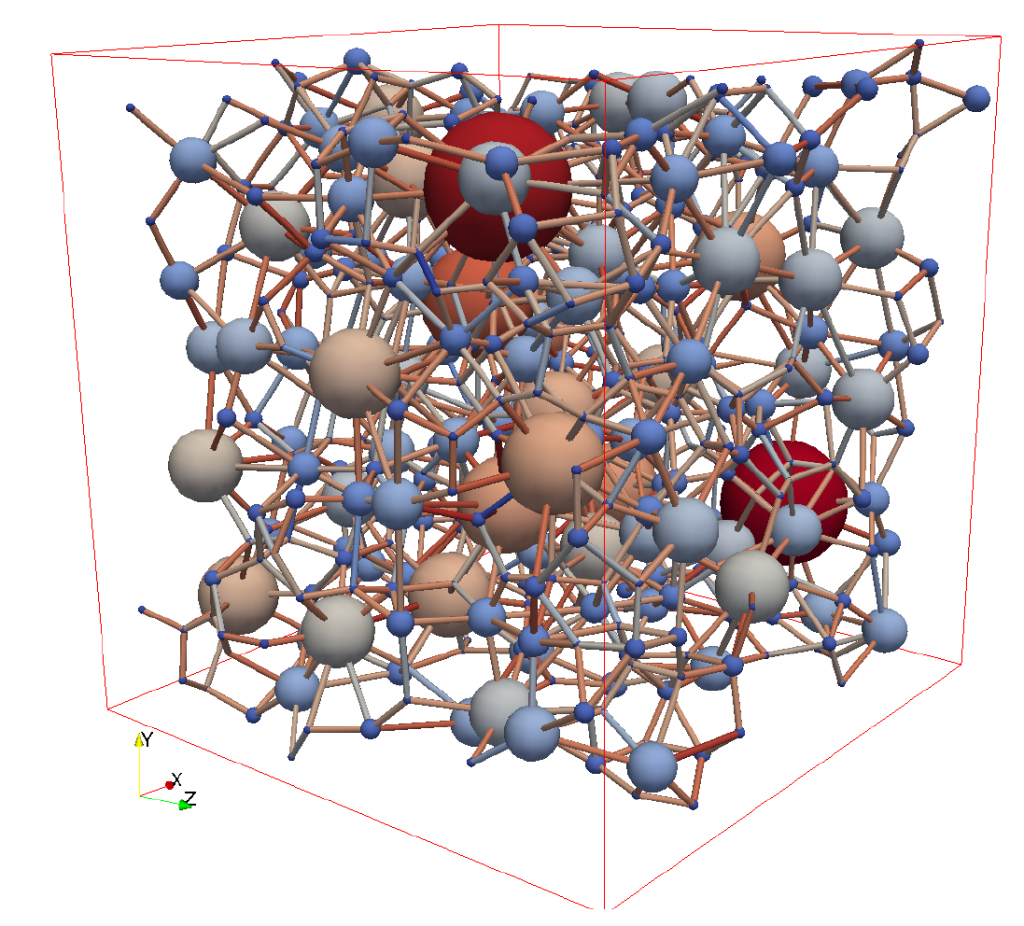C5
A novel coupling approach for DEM/CFD simulations accounting for the heterogeneous and anisotropic nature of bulk solids
Principal Investigator

To a large extent, gas phase reactions in bulk solids are dominated by the local mixing rate of the oxidizer with the corresponding fuel injected into the reactor or gases released from the particles in the bed. Moreover, the local availability of the oxidizer at the particle surface is driven by the fluid flow in the local void structures between the particles and the local flow around each particle. Therefore, it is of greatest importance for chemically reacting bulk solids systems to improve the description of the flow field compared to coarse approaches typically used nowadays.
These void and flow structures in bulk solids are typically inhomogeneous. Therefore, accounting for the heterogeneous and anisotropic nature of the local bulk solid packing is paramount to accurately predict reactive bulk solids. C5 is a proposal to construct, derive and validate new models for a more accurate coupling between the fluid and particles in DEM/CFD frameworks, taking into account the heterogeneous and anisotropic nature of particle configurations.
Firstly, the volume fraction in the coupling terms will be replaced with a second-order “fabric tensor”, to account for the anisotropic nature and the gradients of the volume fractions in each of the directions, to describe the heterogeneous nature of the voids in bulk solids. For the second order tensor description, this approach is an extension of the description of complex porous materials (Ehlers and co-workers [1,2]), in which the idea of the “micro-structure information” is incorporated into the theory of porous media. In this proposal, we will expand this idea to systems with convective and diffusive flow, which has not been done before.
Secondly, the framework for the momentum interaction terms will be redeveloped, taking into account the anisotropic and heterogeneous nature of the particle configuration and the fluid flow within it. This will be done by incorporating the second-order tensor, describing the directionally dependent volume fractions, and their derivatives, and by revisiting the formulation of the hindered settling velocity correction, and making this dependent upon the local structure of the particle configuration. This was firstly performed for describing the anisotropy of the fabric in biological tissue, by applying a local fabric tensor. We will expand this methodology to describe the anisotropic nature of the void structures within bulk solids.
Direct numerical simulations (DNS) of the flow within a large variety of particle assemblies will be carried out. These micro-scale simulations will be done to study the effect of the structure of the local particle assemblies, and the detailed interactions of the fluid with these particles will be completely resolved. This will enable to elucidate the effect of the structure of the particle configuration and the fluid flow within it, on each individual particle and vice-versa. In these simulations the following system properties will be varied and studied: packing structure of the particle arrays, size distribution of the particles, and the flow properties of the fluid. The information gathered at this scale will be coarse grained and used to derive semi-empirical closures based on the second-order tensor, for the momentum interaction terms, and to validate this approach.
We will use the experimental data gathered in projects A1 and C2 for validation and information exchange with respect to the micro-scale simulations. Large-scale simulations with the new closures will be used as validation and compared with the CRC/TRR reference configurations and findings of project C2. The newly derived closures for the volume fraction and momentum interactions for the macro scale are important deliverables to project C7: it is to be expected that accounting for the local heterogeneous nature of the particle assembly when predicting chemical reactions and heat transfer in bulk solids using DEM/CFD, this will significantly improve the accuracy of such predictions.




